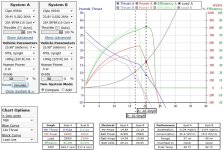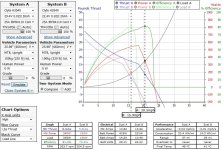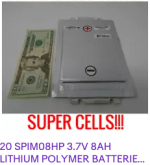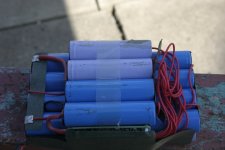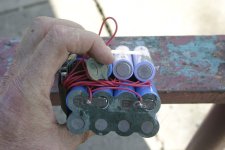... :lol: ...
Finally finished
33.3V 31.2Ah eZip battery!
Naming
MaxCell due to the 9s12p being the maximum number of cells that will physically fit in eZip RMB battery shell.
(And to differentiate from my 33.3V 43.2Ah insulated
"Cool Cell")
Simple but very snug fit. To secure cells tightly and to protect solder points, top and bottom are covered with 1/8" closed cell foam sheets. Had to put a little weight on case to close properly ... center bows out a bit, center screw removed to allow 9s12p fit.
Side A was nice and straight forward, nice straight runs with heavy tinned copper braid.
Any connection over positive ends of cells were protected with additional HD duct tape!
Side B required a few curves, which was easy if braid curved before flattening.
Installed the new 58V rated fuse holder with 40A fuse. Upgraded charging wire to 18ga, unlikely to charge over 5A, will upgrade to 14ga if I ever want to charge at max recommended 15A.
Entire battery wrapped in clear boxing tape to stabilize and protect. Meter leads poke through easily, for testing.
Sides wedged firmly with sturdy cardboard.
I did add 1/2 cell height wood blocks to support rows 2-4-6-8
MaxCell Specs:
33.3V 31.2Ah =
1038.96mAh - 1kWh+
9s12p = 108 cells
NOS from HP laptop batteries.
72 Sony 2600mAh + 36 Sanyo 2600mAh
Arraigned as 9s8p(Sony)+4p(Sanyo)
Both types effectively "empty" at a static 3.70V
20-21mph (will go 25mph in my upgeared eZips)
Including shell, battery build weighs
12lb 0oz
Compare to eZip OEM SLA battery:
24V 10Ah = 240mAh <
120mAh usable
15-16mph
15lb 9oz



